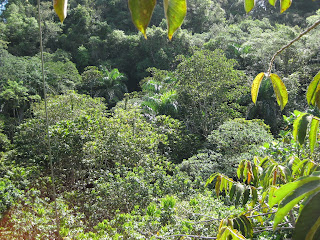We, humans, have historically used natural resources according to our needs. Based on the idea of a fragile nature, scientists understand that many changes to natural ecosystems are irreversible and that there is no solution for recovery. However, how many of you have thought critically about it? Years ago, while speaking to a great ecologist, I heard the sentence:
“Nature always adapts, even though humans are too arrogant to accept it!”
I wasn’t very convinced at the time. Nevertheless, after a while studying disturbed ecosystems, I found out that nature is more resilient than we think. Today I would say that the paradigm of permanent loss of natural resources is only partially valid.
During the Anthropocene Era, Earth experiences fast and constant changes to environmental conditions (Morse et al. 2012). Climate change is real, resulting in deep modifications affecting live ecosystems. Changes in the species distribution ranges and in the biogeochemical cycles are commonly documented consequences. Nevertheless, I don’t believe nature is incapable of overcoming modifications, at least in part. If we start to perceive nature as living organisms with free exchange between the biota and environment, and forget the artificial classifications, such as introduced and native species, we start to realise that nature adjusts to changes by expressing itself in a different manner to face new abiotic conditions. Sometimes, the outcomes of these processes are surprisingly positive.
While doing my master’s degree in Puerto Rico, I performed studies on the controversial topic of “novel forests” – forests strongly influenced by introduced trees – that showed me clear examples of nature’s resilience. Specifically, I studied forest stands of Castilla elastica, an introduced tree in the island that regenerated as dominant after land abandonment. I found that in the forest dominated by C. elastica, a rearrangement of the plant community takes place following species introductions and disturbances. The new influential species might act as surrogates of previous dominating species, driving the disturbed ecosystem to a new self-sustainable state (for details check Fonseca-da Silva [2014]). In some cases, the introduced species remains dominant in the community for decades. In other cases, the dominant species decreases in density, favouring native species when the forests becomes mature (Abelleira-Martínez et al. 2010).
 |
| Canopy view of the Castilla novel forest |
 |
| Understory of Castilla novel forest |
Forest structure and biomass may also recover after decades of regeneration. However, legacies might influence strongly the forest functioning, changing the ecosystem processes and rates in the “new” forest state. These novel ecosystems can become faster in cycling organic matter (Fonseca-da Silva, 2015). In the end, we see a new version of a disturbed ecosystem, with a mix of new and native species that were resistant enough to survive in the new conditions. Whether these forests can go back to their original state is, however, unclear.
 |
| Native species growing on a novel forest |
 |
| Wildlife using resources from novel forest |
The controversy about changes in nature arises predominantly from the fear of losing important ecological services. We have seen nature overcoming changes by modifying its components and rates. However, we are not sure whether humans would be able to cope with the consequences of those changes. Still, I am not advocating that there are no problems with species invasions. I also agree that losing species can be a big problem, especially key stone species. My point is that nature might not be the most disfavoured party because of its ability to regenerate from certain levels of disturbances. We would have to adjust the way we see nature and release from old concepts, as well as find alternatives to deal with changes in ecosystem services.
CITED REFERENCES
Abelleira Martínez, O. J., M. A. Rodríguez, I. Rosario, N. Soto, A. López & A. E. Lugo. 2010. Structure and species composition of novel forests dominated by an introduced species in north central Puerto Rico. New Forests 39: 1-18.
Fonseca da Silva, J. 2014. Species composition, diversity and structure of novel forests of Castilla elastica in Puerto Rico. Tropical Ecology 55:231–244.
Fonseca da Silva, J. 2015. Dynamics of novel forests of Castilla elastica in Puerto Rico: from species to ecosystems. Ecology and Evolution, doi: 10.1002/ece3.1578
Morse, N. B., P. A. Pellissier, E. N. Cianciola, R. L. Brereton, M. M. Sullivan, N. K. Shonka, T. B. Wheeler & W. H. McDowell. 2014. Novel ecosystems in the Anthropocene: a revision of the novel ecosystem concept for pragmatic applications. Ecology and Society 19(2): 12. doi: 10.5751/ES-06192-190212